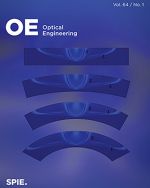Resources / Research & Innovation Center / Publications
M-squared measurement repeatability: The best metric in the certainty of the measurement
Michael Scaggs, Gilbert Haas
Abstract
The ISO 11146-1 document outlines the method for making an M-square measurement but without an actual M-square standard, i.e., having the ability to send a measurement instrument to a standards laboratory for calibration, variation of the M-square from one measurement instrument to another can easily vary by more than 10%. Having this much variation and no ability to calibrate an instrument to a national standard, what should any user therefore use to determine how good a measurement is? The ideal metric would be the accuracy but without a standard, there is no way to establish an accuracy. The next best metric would therefore be repeatability. How repeatable is the instrument from one measurement to the next and from one person to the next? If, for example, two different technicians or engineers measure the same laser with the same measurement device but yield a variation of 10% between the two measurements, the repeatability would logically be this value and therefore the accuracy cannot be better than this value. Given the lack of a national standard for a M-square instrument, repeatability of the instrument is the safest metric in lieu of an accuracy standard. This work looks at M-square measurements and the influential factors on repeatability within M- square measurements.


